Which Birds Eat Thistle? What You Need To Know!
Last Updated on
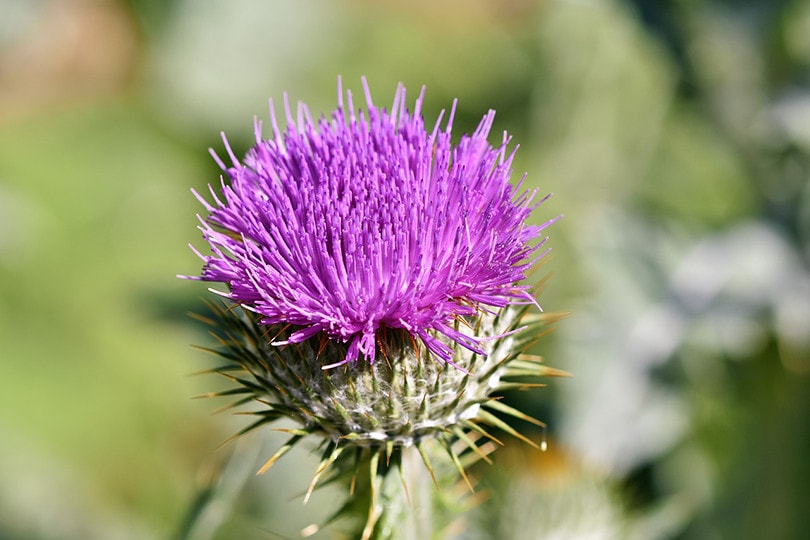
Thistle, also known as the Nyjer seed, is an excellent bird feed to keep on hand if you want to attract popular backyard birds. Many finches and seed-eating birds love thistle, though not all backyard birds like this seed type.
Knowing what types of birds eat the seed will help you better attract the birds you want to see in your yard.

About Thistle
Despite its name, the thistle seed is not actually related to the thistle plant. Instead, thistle is a black seed of the African Yellow Daisy. This seed is one of the most popular ingredients for backyard bird seeds because it provides a lot of oil and nutrition that seed-eaters love.
The downside of thistle is that it often has to be imported and is very popular. Between these two factors, thistle seeds are some of the most expensive bird seeds on the market. The feed is often mixed with other seeds to lower the price.

The 13 Birds That Eat Thistle
Many birds prefer eating thistle seeds to others. More specifically, birds that are skilled at cracking shells especially love these seeds. As a result, birds with small, pointed bills love thistle seeds since they have bills specifically designed for this food source.
Here is a list of 13 popular backyard birds that eat thistle, as well as a description of their appearance:
1. Mourning Doves
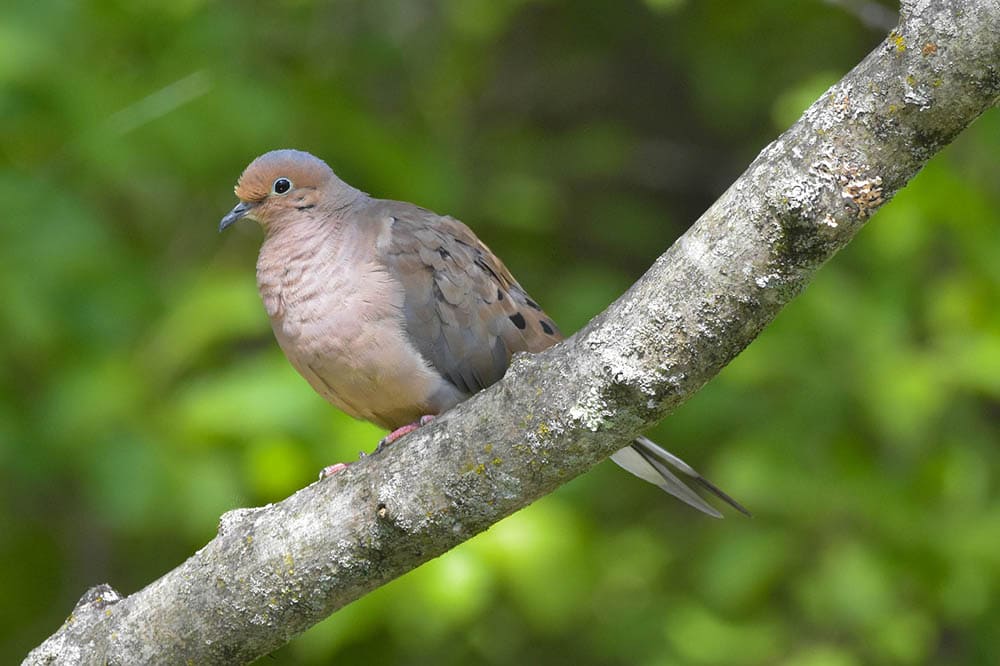
The Mourning Dove is a small bird with a wingspan between 15 – 18 inches. Its body is grayish brown, and it has a pointed tail with white bordering. Its beak is thin, small, and black. It also has black spots on its wings and under its eyes.
2. Song Sparrows
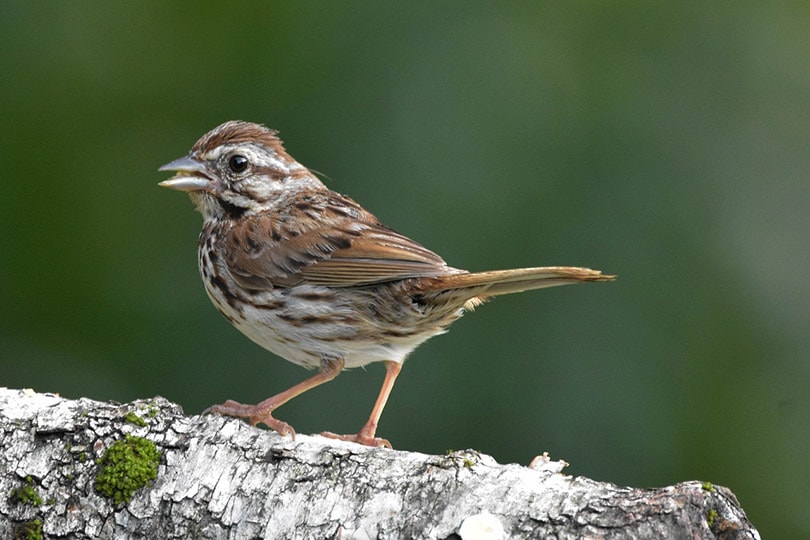
Song Sparrows are dainty little birds. The body has different shades of brown with thick streaks running down it. Its chest is mainly white, and its head can have different shades of red, brown, and gray. The beak is very small and pointy.
3. American Goldfinches
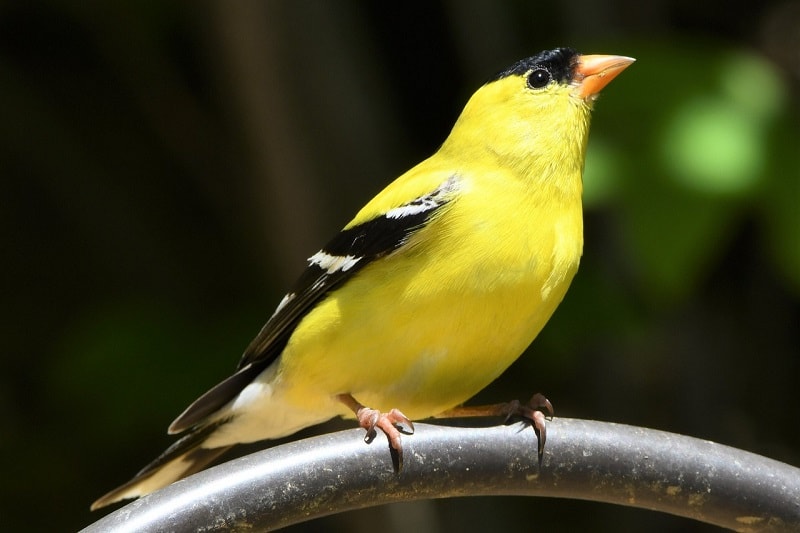
American Goldfinches are hard to miss. It has a bright yellow body with black plumage on the top of its head and wings. Its beak is short and pointy with an orange or golden hue.
4. European Goldfinches
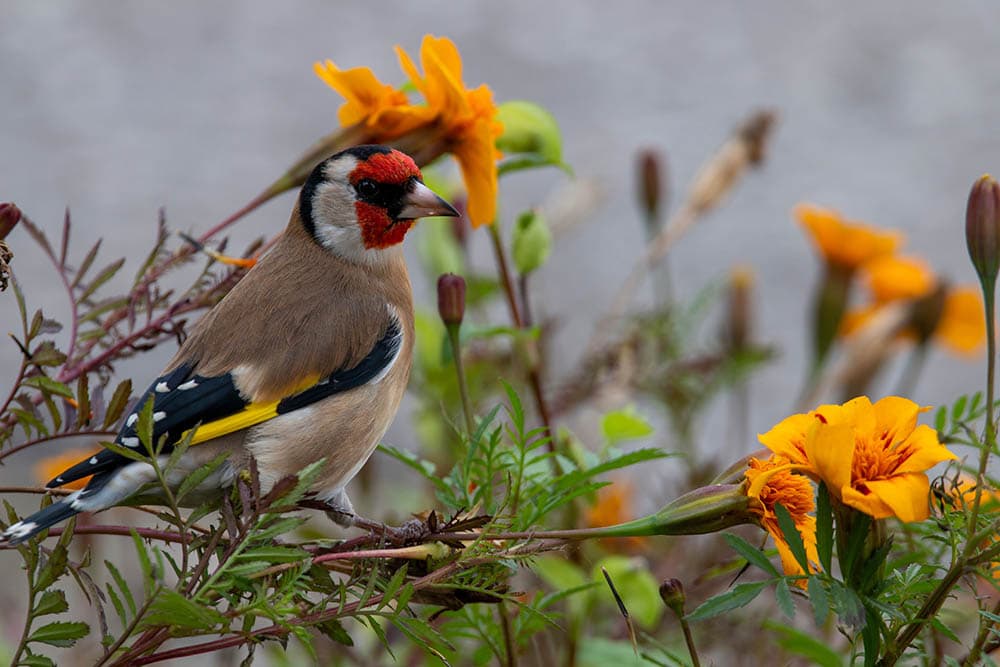
European Goldfinches aren’t quite as flashy as their American counterparts, but they are still pretty noticeable. Its face is red, its head is black and white, and its body is different shades of brown, white, black, and yellow.
5. Lesser Goldfinches

The Lesser Goldfinch is more similar in appearance to the American Goldfinch than the European Goldfinch. The main difference is that it has a duller, yellow coloration. It also has different shades of olive, brown, and gray on its back and wings.
6. Purple Finches
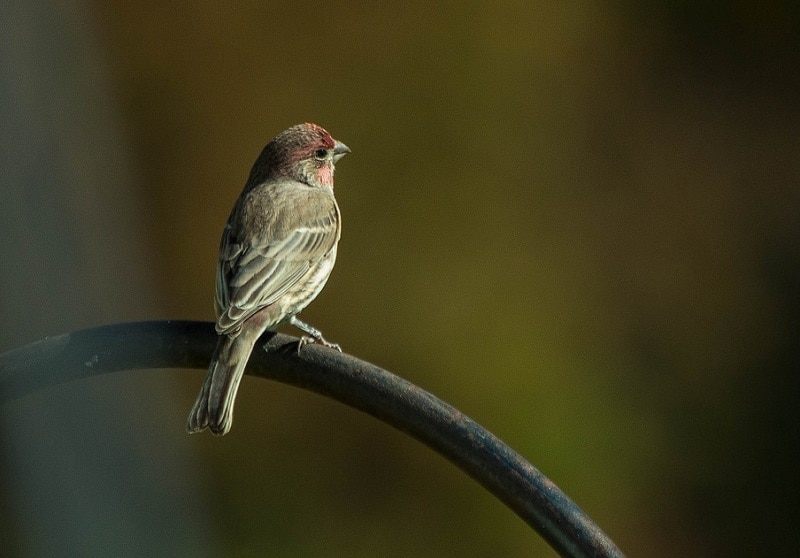
Purple Finches have raspberry-colored heads. The raspberry color continues slightly down its back and chest. The wings have different shades of brown and black, whereas its belly is tan. The beak is short, pointy, and tan.
7. House Finches
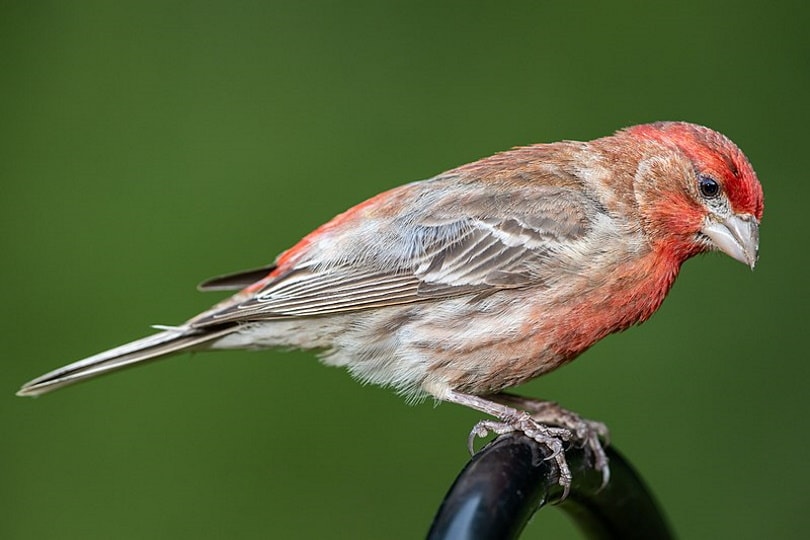
The House Finch looks a lot like a Purple Finch. It has raspberry hues on its head, chest, and back, but the red color isn’t quite as bright as it is on the Purple Finch. Instead, the wings and bottom half of the body have more tan, brown, and black colorations with streaks.
8. Pine Siskins

The Pine Siskin is a small songbird with a sharp bill and a short tail. It has a unique bill shape that is much more slender than other finches. It is yellow and tan with black and brown streaks on its wings and body.
9. California Quail

The California Quail is a distinctive bird. It is plump with a small head and bill. It has top-knot feathers and a textured plumage with different shades of gray, black, yellow, and red. This bird is one you will not easily forget.
10. Common Redpolls

Common Redpolls are brown and white with streaked sides. These birds have a distinctive, small red patch on the forehead and black feathering around the bill. The bill is small, yellow, and pointy.
11. Hoary Redpolls

The Hoary Redpoll looks a lot like the Common Redpoll. The main difference is that it has primarily white coloration with gray and brown streaks. You can distinguish the Common Redpoll from the Hoary Redpoll from their base color. Hoary Redpolls are whiter, but they still have a red patch on their foreheads.
12. Indigo Buntings

The Indigo Bunting is small. It gets its name from its vibrant-blue color, but this color is only present in males during the summer. The females are brown year-round, and the males are brown in the winter. The beak is a grayish color.
13. Dark-Eyed Juncos

Dark-Eyed Juncos are flashy sparrows. They are easy to spot because they have crisp markings and a light tail. The beak is small, pointy, and yellow or tan in color.
What Birds Do Not Eat Thistle?
Although many birds love thistle, some do not eat it. Frugivore species, for example, will not eat thistle seeds. Nectar-loving birds will not either. Likewise, large birds often avoid thistle seeds because of their small size.
Birds that do not eat thistle include orioles, waxwings, hummingbirds, starlings, cardinals, and grosbeaks. If you want to attract these birds or other similar species, thistle is not the seed for you and your yard.

Conclusion
If you have thistle seed sitting around your home, use it to attract small, seed-loving birds with pointy beaks. Finches, sparrows, and other similar species love it the most. Birds that do not eat seeds will not look twice at them. Neither will larger species that have trouble opening these small seeds.
- You may also be interested in: 5 Best Bird Feeders for Doves & Mourning Doves
Featured Image Credit: Ralphs_Fotos, Pixabay
About the Author Robert Sparks
Robert’s obsession with all things optical started early in life, when his optician father would bring home prototypes for Robert to play with. Nowadays, Robert is dedicated to helping others find the right optics for their needs. His hobbies include astronomy, astrophysics, and model building. Originally from Newark, NJ, he resides in Santa Fe, New Mexico, where the nighttime skies are filled with glittering stars.
Related Articles:
What Is the Best Binocular Magnification for Hunting? Optical Features Explained
Can You Use Binoculars to Look At Stars? How to Choose the Right Pair
10 Types of Hummingbirds in Arkansas (With Pictures)
8 Types of Hummingbirds in Nebraska (With Pictures)
5 Types of Hummingbirds in Idaho (With Pictures)
3 Types of Hummingbirds in Mississippi (With Pictures)
8 Types of Hummingbirds in Kansas (With Pictures)
5 Types of Hummingbirds in West Virginia (With Pictures)
